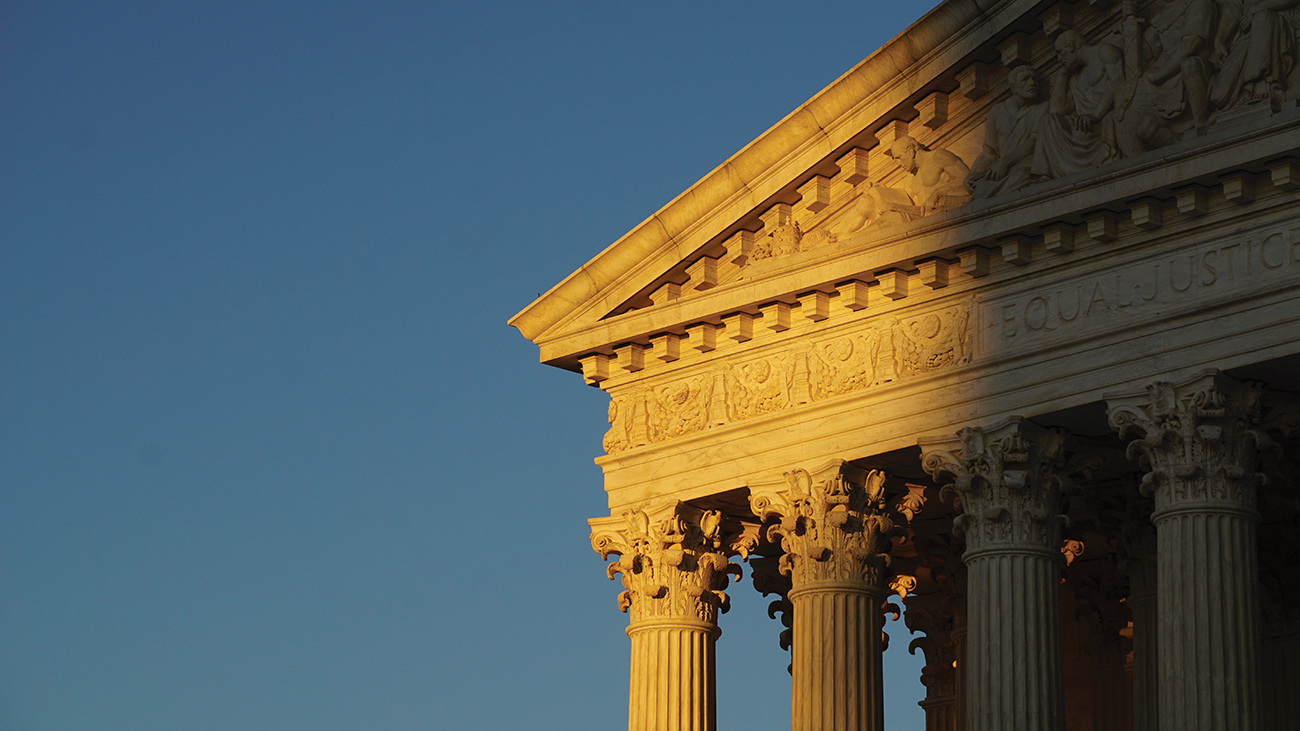Big Decisions
Faculty experts make sense of a series of Supreme Court decisions affecting health care, environmental regulations and election law.

Over the summer, the U.S. Supreme Court handed down a series of headline-making decisions — overturning decades of precedent in some cases. We spoke to Cal Poly faculty whose areas of study relate to two recent decisions and one upcoming case to break down the impacts here in California and around the nation.
Dobbs v. Jackson Women’s Health Organization
THE GIST: Overturning Roe v. Wade and rejecting a Constitutional right to an abortion
 Analysis by Jennifer Denbow, associate professor of political science studying reproductive law and politics
Analysis by Jennifer Denbow, associate professor of political science studying reproductive law and politics
“Beyond the increase in forced births in states that are curtailing or banning abortion, I think there are also going to be wide-ranging effects, including people not seeking prenatal care because of a fear of prosecution for self-induced abortion or even just having a natural miscarriage, which is indistinguishable from an abortion. In statesthat are instituting laws that say embryos are persons, there are also implications for in vitro fertilization — that could be criminalized in those states.
“Here in California, the big implication is that I think there are going to be a lot of pregnant people from other states traveling here to seek abortion.
“One other big implication is the broader right to privacy. Privacy was the foundation of Roe v. Wade, and also of Supreme Court decisions that said laws that ban contraceptives violate the Constitution. It’s also the basis of the constitutional right to same-sex marriage. The court has said that Dobbs doesn’t implicate those decisions, but if you look at their reasoning, it absolutely would undermine those other rights.”
West Virginia v. Environmental Protection Agency
THE GIST: Limiting the Environmental Protection Agency’s authority to enforce climate-related regulations
 Analysis by Anastasia Telesetsky, professor of natural resources management and environmental sciences studying environmental policy
Analysis by Anastasia Telesetsky, professor of natural resources management and environmental sciences studying environmental policy
“In a nutshell, the Supreme Court decided that the EPA does not have the authority to make regulations that require a shift over time in the kinds of energy sources that are used for energy generation. The EPA had introduced regulations under the Clean Power Plan designed to shift energy production from coal and natural gas to more renewable energy. The court made its decision on the basis of the major questions doctrine, which says that executive agencies like the EPA have to have a very clear direction from Congress before they are allowed to regulate on something like climate action. According to the Supreme Court, Congress did not authorize the EPA to take regulatory action to address climate change.
“This is an important case because the court hadn’t invoked the major questions doctrine for years.
“The court is really taking a position where it’s empowering itself by disempowering the EPA and every other executive agency. I think it’s now going to require the agencies to do a lot more litigation-proofing before they roll their regulations out.”
Upcoming Case: Moore v. Harper
THE GIST: Examining whether state legislatures have ultimate authority in regulating federal elections
 Analysis by Mike Latner, professor of political science studying voting rights
Analysis by Mike Latner, professor of political science studying voting rights
“This case could potentially allow state legislatures, which are often gerrymandered into place and unrepresentative of their states, to expand their authority over federal elections. This means state legislatures could effectively take control over the composition of the House of Representatives, a very clear violation of the overarching principle of separation of powers between states and the federal government in the Constitution. There are very real consequences for not just conservative state legislatures, but for Californians and voters across the country.
“One of the more extreme versions of the theory, which Chief Justice John Roberts has endorsed, is the idea that citizens themselves do not count as a legislature, so any laws or policies based on ballot initiatives may be rendered unconstitutional. That would affect redistricting in California, which is done by an independent commission through the ballot initiative process.
“The practical effect is that our elections would look more like elections prior to the Voting Rights Act of 1965, so racial gerrymandering and partisan gerrymandering — or racial gerrymandering disguised as partisan gerrymandering — could be more common in these legislatures.”


